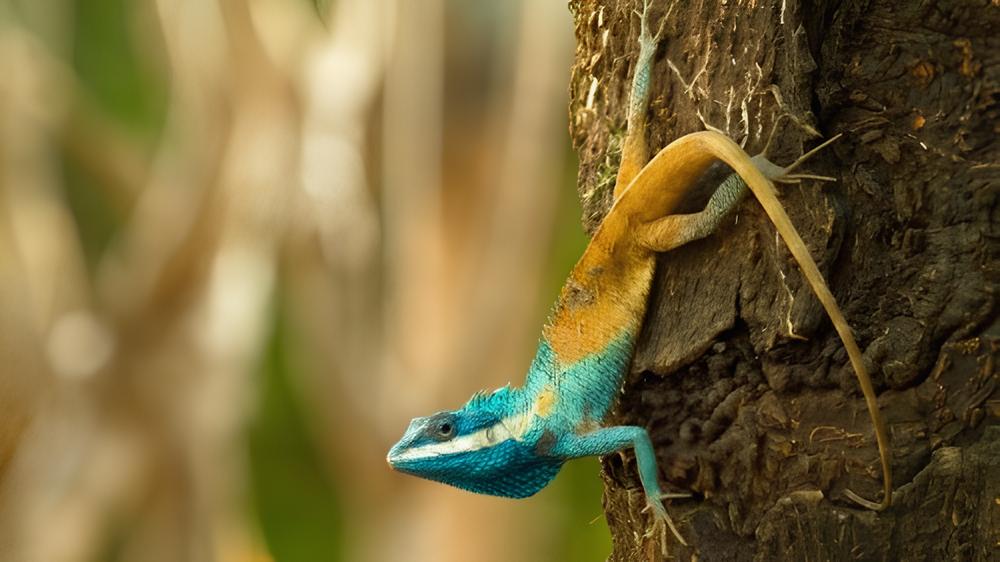Between 2021 and 2022, the Greater Mekong Region in Southeast Asia witnessed the presence of 380 previously unknown species, an exciting finding revealed by the World Wildlife Fund (WWF) in its latest report. These new discoveries include a diverse range of creatures, including an astonishing 24 amphibians, 19 fish, one mammal, 290 plants and 46 reptiles. The report also highlights the existence of a lizard species that can change its body color, a recently discovered venomous snake, and an orchid plant that bears a resemblance to a "Muppet" character.
The report reveals the collaboration of hundreds of scientists from universities, conservation organizations, and research institutes around the world. They made discoveries in the regions of Cambodia, Laos, Myanmar, Thailand and Vietnam. As a result, the total number of species of vascular plants, fish, amphibians, reptiles, birds and mammals recorded in the Greater Mekong Region since 1997 reaches an incredible 3,389.
A Stunning Discovery

Cambodian Blue-Crested Agama Discovered in Mekong Region
(© Henrik Bringsoe / WWF UK)
Scientists working with WWF-Greater Mekong have revealed the presence of "rare and iconic" creatures in the region, including the Cambodian blue-crested agama, an aggressive lizard found near Angkor-era archaeological sites. This lizard has the ability to change its body color as a unique form of defense.

(©Thai National Parks / Creative Commons)
An interesting find has been made in the Tenasserim Mountains of Thailand on the border with Myanmar. The find was a gecko with its toes bent downwards. The species has been named Cyrtodactylus rukhadeva, a type of arboreal animal that spends most of its life in trees. Its scientific name is inspired by Rukha Deva, a tree nymph in Thai mythology who is believed to protect forests.

In the report, the researchers also revealed the discovery of an interesting little frog found in the Thai-Malay peninsula. Pictured above is the toad with the scientific name Ansonia infernalis, also known as infernal stream toad for its characteristic reddish-orange coloration on its limbs and sides, which resembles the flames of hell. This discovery provides a stunning picture of the uniqueness and beauty of nature, inspiring researchers.
The WWF report also mentions the exciting serendipitous discovery of Dendrobium fuscifaucium, a type of orchid. It is a type of miniature orchid with striking pink and bright yellow colors, giving it a look similar to the cheerful and adorable characters like the "Muppets".
This fascinating story began when a nursery owner bought the orchid from a local vendor in the limestone hills of Vientiane Province, Laos. When the plant finally bloomed, the vendor sent photos of the orchid to Pankaj Kumar, an Asian orchid expert and visiting professor at Texas Tech University. Recognizing the possibility of a new species, Kumar worked with other orchid experts in Laos to determine the orchid's origin. To date, however, scientists have not been able to find this orchid flowering naturally in the wild.

(© Keooudone Souvannakhoummane/WWF UK)
On this occasion, Kumar told WWF that the discovered orchid is not the first orchid to be identified through trade in Laos. In fact, several species have been identified through trade in the country over the past decade. These discovered orchids offer exceptional beauty with their miniature size and large flowers, thus having a very high potential ornamental value.
However, it is important to remember that while almost all legally traded orchids are artificially bred, the trade and over-exploitation of wild populations remains a serious threat to many species. WWF highlights this in its report, reminding us of the importance of protecting biodiversity and being cautious about potentially harmful trade practices.
Threatened with Extinction
In its report, WWF expressed excitement at the discovery of new species in the Greater Mekong region. However, they also expressed serious concerns about the safety of these species and urged local governments to enact environmental protection laws to protect them from the threat of extinction caused by human activities.
In the report, WWF says that these new species face intense pressure from deforestation, habitat degradation, infrastructure development, loss of river flows, pollution, human-caused diseases, competition from invasive species and the destructive illegal wildlife trade. They regret that many species have become extinct before they could be discovered. Meanwhile, K. Yoganand, WWF-Greater Mekong regional wildlife lead, said that we have a responsibility to prevent their extinction, protect their habitats and help them recover.
Mark Wright, WWF-UK’s director of science, also mentioned that this latest report is a sobering reminder of the extreme threats facing many species and habitats. He stressed the need for urgent action and strong commitments in response to the risks we face if we do not take the necessary steps.



















